Cervical Dystonia or commonly called 'Spasmodic Torticollis' is a neurological disorder that causes the involuntary muscle contractions, spasms, pain and tremors in neck region. Sagana Vatham is one among 80 vatha disease mentioned in the Siddha text book of Siddhar Yugi. This disease affects the neck & upper extremities with some of its signs and symptoms bearing a resemblance to Cervical dystonia symtoms. There is no permanent treatment of CD but some relieve can be achieved from different CAM (complementary and alternative medicine). Siddha vaidyam is another alternative therapy used in such disorders.
A 56-year old male from Hyderabad a K/C/O Cervical Dystonia reported to the Chakrasiddh with chief complaints of pain and involuntary movements to right side of neck since 2 1/2 yrs. He was given Varma therapy like Varma Elakku Muraigal (Varma Relieving Methods) and Varma Thadavu Muraigal (Varma Massage Methods) to decrease pain and spasms, myofascial release and stretching, to decrease dyskinesia. The total treatment was given for 25 sessions in 6 months span with gaps in between. This study aimed to examine the effects of siddha therapy on pain, spasms, and dyskinesia and to identify possible improvements in quality of life (HRQoL) of the patient.
Numeric Rating scale (NRS) was used for pain at each session. Disease-specific HRQoL was assessed by using the Cervical Dystonia Impact Profile-58 questionnaire (CDIP-58). Positive outcomes were exhibited after 25 sessions in the frequency of pain and spasms and holding the neck in centre for 1 hour which was just 5 mins earlier. The pain (NRS) was markedly reduced from 7/10 score to 2/10. CDIP-58 scores, disease-specific HRQoL, showed a significant improvement in all parameters after 25 sessions of treatment.
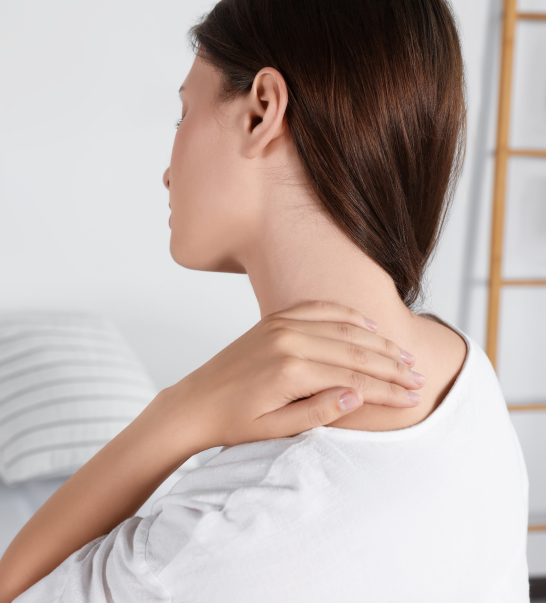
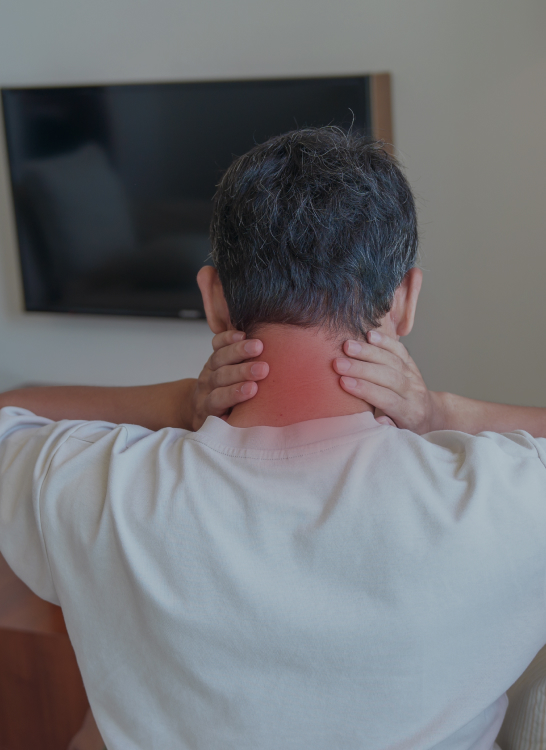
Cervical Dystonia or commonly called 'Spasmodic Torticollis' is a neurological disorder that causes the involuntary muscle contractions, spasms, pain and tremors. This results in repetitive or twisting movements and dyskinesia- abnormal turning of head on one side [1]. It also results in abnormal posturing of head, shoulders and neck. CD is the most common focal dystonia, affecting the social life and decreased quality of life for most patients [2]. The causes of Primary CD may or may not be identifiable but it is believed to be secondary to other neurological diseases such as post brain stroke, post encephalitis syndrome, and other degenerative diseases that causes a damage to the basal ganglia [2]. In western countries, Cervical Dystonia is found in every 5.4 patients per 100.000 persons and is most commonly found in Caucasian women. Generally, the onset is estimated when the patients are in the age of mid 30s to 40s [3].
The typical symptoms of CD includes pain, abnormal posture, spasms, tremors, and dyskinesia. Pain is experienced in almost all patients due to the presence of muscle contractions and head deviations [4,5]. The symptoms are cause of significant disability and impaired quality of life among patients [6]. Cervical Dystonia is also thought to increase psychiatric issues like anxiety and depression in patients [2,5]. Interventions to reduce psychiatric issues and pain plays a more prominent role in treating Dystonia patients in order to improve disability levels.
Researchers believe there is no complete treatment for Dystonia and all treatments are aimed at restoring function and managing symptoms [7]. Some relieve can be gained by conventional treatments including pain relievers, Botox injections, or sometimes surgical treatment. Currently, the study evidences show best treatment option is to inject the dystonic neck muscles with botulinum toxin but for a temporary period [8]. Many complementary and alternative medicine (CAM) therapies such as physical therapy, acupressure, Kerala massages, homeopathy, chiropractic adjustments are utilized by dystonia patients to manage symptoms. Previous research showed dystonia patients could benefit from alternative therapies but these treatments are not well documented [9].
Siddha vaidyam is another alternative therapy which is an ancient and traditional therapy used in Indian subcontinent especially in Southern India. This therapy works on Varma points where the vital energy of our body is concentrated and has proved to be beneficial in managing the symptoms of disorders like dystonia. It focuses on removing blockages, improving energy flow and activating the body's internal healing mechanisms. Thus, resulting in cure and an improved lifestyle with no medications and no surgical intervention[10,11]. According to varma theory to stimulate the varma points, pressure should be applied in these points at a particular and given strength [12]. As mentioned in Varma literature, stimulation of varma points consist of five main aspects as saves life (Physiological aspect), causes disease (Pathological aspect), cures disease (Therapeutic aspect) and gives longevity (Preventive aspect) [13,14]. Sagana Vatham (cervical spondolysis) is one among 80 vatha disease mentioned in the Siddha text book of Siddhar Yugi. This disease affects the neck & upper extremities with some of its signs and symptoms bearing a resemblance to Cervical dystonia symtoms.
This study aimed to identify possible improvements in quality of life (HRQoL) after multiple sessions of pressure therapy in an adult dystonia patient. The patient was given treatment for total 25 sessions with gaps in between depending upon his improvement. Numeric Rating scale (NRS) was used for pain at each session. Disease-specific HRQoL was assessed by using the Cervical Dystonia Impact Profile-58 questionnaire (CDIP-58). The assessments were performed before and after the 25- sessions in a span of 6 months treatment period.
A 56-year old male from Hyderabad a K/C/O Cervical Dystonia reported to the Chakrasiddh OPD in Jan,22 with chief complaints of pain and involuntary movements to right side of neck since 2 1/2 yrs. He had neck deviation to right side and was unable to hold his neck in centre even for few minutes (5 mins) and left side. His complaints also included severe neck pain, swelling over left side with cervical stiffness, tingling sensation and numbness in both upper limbs and headache on/off from past 2 years. Since, the patient was on homeopathic medications from last 1 year, the intensity of pain was less (7/10), numbness and tingling sensation had reduced but the problem was still persistent.
On turning the neck towards left side, he had cramps and tremors. He found difficulty on sleeping to his left side and while walking, he felt pain as he had to keep his body tilted due to neck stiffness. He noticed that after sleeping he didn't had pain in morning but it would get aggravated as day passes by. Patient had difficulty while driving the car and so had completely stopped driving.
Concerned patient was having office job with sitting duty for 9 hrs and had to attend meetings throughout the day. The patient noticed that anxiety and stress was aggravating the condition and he would get tremors often. He had embarrassment due to his present condition so his social life was also getting affected. As the only sole earning member of the family responsibility was on his shoulders, he had immense psychological stress which led to depression and deterioration in his quality of life [6].
The patient is Non-diabetic but age-related Hypertensive. He has a H/o Vasectomy and Haemorrhoidectomy 20 years back. In 2020, he had a brain stroke and was admitted for a week in hospital for same. After 10 days of stroke, patient started feeling acute pain and neck deviation to right with continuous shaking movements of neck. It was associated with severe stiffness in neck and eyes pain. On increase in eye pain, the patient consulted an ophthalmologist, who advised him to visit a neurologist terming the issue as neuro problem.
The neurologist confirmed it as Dystonia and started Baclofen and lateron he was injected with Botox but he could get only mild relief. The condition deteoriated after he had covid in 2021. Over the past year, the patient managed his symptoms with homeopathic medications and light exercise three times a week. His colleague advised him to visit Chakrasiddh for consultation.
Before start of treatment, all videos of patients walking style, range of movement of neck, level of dyskinesia was recorded as pre-treatment assessment. It is essential, as it will affect the final outcomes and the improvement can be identified.
Pre and post-treatment pain severity measurement were assessed using the NRS (Numeric Rating Scale) at each treatment session where 0 refers to no pain and 10 refers to worst possible, excruciating, unbearable pain. The pain was evaluated on different symptoms like during bending, walking, sleeping, working, lifting, exertion, movements of head, neck, shoulder, arms etc As spasms occurred in the same areas of pain, no separate measure was taken. The patient was asked to keep a daily record of overnight pain and spasm frequency over the next 6 months period. (Table-1)
The quality of life in patients of Cervical dystonia was assessed by using the Cervical Dystonia Impact Profile-58 questionnaire (CDIP-58). The centre had developed a simple questionnaire on basis of CDIP-58 which covered all aspects of symptoms to assess quality of life. It is composed of fifty-eight 5-point items grouped into eight subscales that measure symptoms (head and neck movements, pain and discomfort in neck and shoulders, sleep disturbance), activity limitations in upper limb activities and walking, psychosocial features (annoyance, mood, psychosocial functioning). Eight summary scale scores are generated by summing items and then transformed to a 0-100 score.
All following measures were evaluated once before the start of treatment and at every 5th treatment session to see gradual improvement. (Fig-1)
The treatment was started on 5th Jan, 2022; it was planned for 25 sessions with gaps in between in total span of 6 months. The treatment included pressure at different varmam points at the neck and thoracolumbar region. Following the initial assessment, 5 sessions were administered after every 3 days. Each session began with a discussion to involve the patient in the treatment process, and feedback of previous treatment was obtained. Record was maintained of severity of pain and spasms release with improvement in daily activities. 30-min were allotted for each treatment session with 10 mins of physiotherapy to strengthen the neck muscles.
He was given Varma therapy like Varma Elakku Muraigal (Varma Relieving Methods) and Varma Thadavu Muraigal (Varma Massage Methods) with the main focus to relax myofascial muscles to decrease dyskinesia and decrease pain and spasms. The following 6 Varmam points are stimulated to achieve a therapeutic effect in the treatment of patient: Muddichu varmam (near C7), Kakkatai Kalam (on b/l shoulders), Kaichulukki varmam ( above the clavicle bone both side) and Chippi Varmam (below the clavicle bone both sides)
In initial 5-8 sessions, patient felt no difference in spasms but he could feel the neck stiffness release and was able to move it much freely. Pain was recorded on NRS after every gap. The intensity of muscle twitching and dyskinesia was noted to visualize the difference. Pain on daily activities like walking, sleeping, lifting and other symptoms were maintained. The patient was advised to notice the intensity and frequency of tremors and spasms along with neck stiffness and swelling in left neck region.
Positive outcomes were exhibited in the frequency of pain and spasms and holding the neck in centre for 1 hour which was just 2-3 mins earlier. Muscle twitching and dyskinesia reduced to only times when he was stressed. Walking had become easier and even improvement was seen in sleeping on left side. Now, the patient could sleep for 20-25 mins facing the left side of body and the pain in lower back and hands is totally reduced. Intensity of tremors and spasms has reduced tremendously from throughout day to only 4-5 times. Neck stiffness and swelling in left neck region is absent now.
After 25 sessions, the pain (NRS) was markedly reduced from 7/10 score to 2/10 (Table 1). CDIP-58 which assess disease-specific HRQoL, also showed a significant improvement after 25 sessions of treatment. The clinical score taken at beginning of treatment for various parameters of quality of life showed score as 83/100 which after treatment was only 22.5/100. The mean score of all eight domains of CDIP-58 including head and neck symptoms, pain and discomfort, upper limb activities, walking, sleep, annoyance, mood, and psychosocial functioning were significantly improved (Table 2).
After seeing the vast improvements in patients symptoms, pre and post x-rays were compared and the case was closed on 12th july, 2022. The patient was given instructions to follow up every 2 months, do regular exercises and to follow a good diet to strengthen the muscles.
The results of this study demonstrate positive effects on symptoms of dystonia through the application of siddha therapy. Post-treatment intensity & frequency of pain, spasms, and dyskinesia were all seen improved meeting the patient's goals for treatment. The varmam therapy of Siddha worked well in stimulating the nervous system & perform vasodilation that improves the circulation of blood and helps in reducing pain, stiffness & inflammation. Various pressure techniques to varmam points were utilized to initiate relief from pain, inflammation, swelling & stiffness associated with musculoskeletal pains.
Though, Siddha therapy is very old and ancient therapy but came into limelight a few years ago, very few studies have been conducted on this topic. This report intends to inspire more research on varmam therapy and its effect on dystonia affecting more than one body region, following trauma or any other secondary cause. Since, it instigates the body to heal on its own, more GP's are suggesting Siddha therapy along with other alternatives in conjunction with conventional therapies.
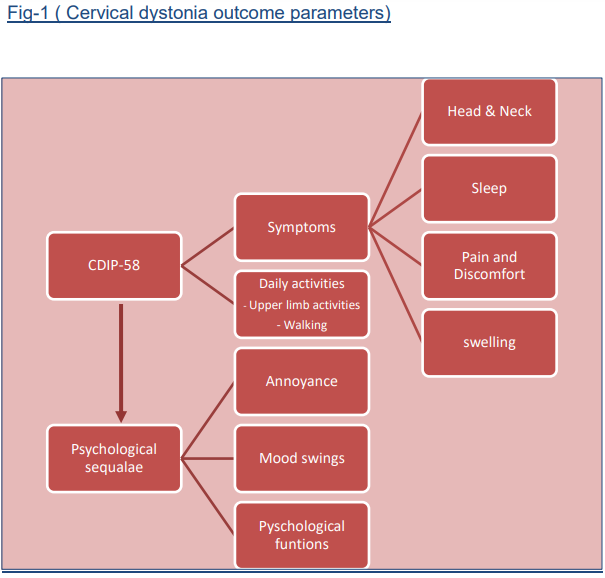
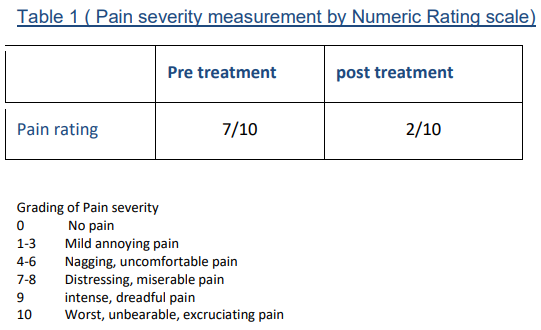
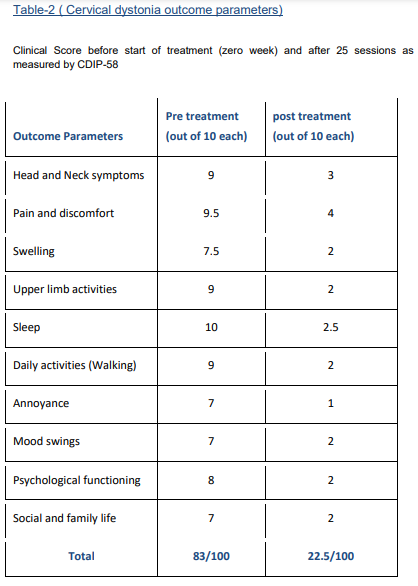
Chakrasiddh Healing Centre | Siddha Healing Centre
2nd Floor, Subishi Town Center, Mokila, Shankarpalle Road, Hyderabad,
Telangana 501203.
Mon - Fri: 10am - 6pm
Sat - Sun: No Appointment
For a consultation appointment, call: +91-7997006614
© 2023 by Chakrasiddh. All Rights Reserved.